- Преподавателю
- Иностранные языки
- Научно-исследовательская работа «Smoking herbal mixes-harmless pastime or evil?»
Научно-исследовательская работа «Smoking herbal mixes-harmless pastime or evil?»
| Раздел | Иностранные языки |
| Класс | - |
| Тип | Другие методич. материалы |
| Автор | Липай Е.В. |
| Дата | 25.02.2014 |
| Формат | docx |
| Изображения | Есть |
INTRODUCTION
It is not a secret that modern people have lots of problems. Problems at work, lack of money, disease, war, and hunger…The list can be long. Do you think young people and teenagers have the sаme problems of the whole world or perhaps they are involved in something else?
The society is facing a drug problem. More people are abusing drugs today than in any other time in history of mankind, and many of those people are youth.
It is important to realize what drugs are for understanding their potential abuse. Drugs are a psychoactive substance. A psychoactive substance is something that people take to change the way they feel, think or behave. Some of these substances are called drugs and others, like alcohol and tobacco, are considered dangerous, but are not called drugs. The term drug also covers a number of substances that must be used under medical supervision to treat illnesses. [14]
I'd like to talk about substances which are used to change the way a person behaves and thinks. In the past, most drugs were made from plants. That is, plants were grown and then converted into drugs such as coca paste, opium and marijuana. Over the years, these crude products were further processed to drugs like cocaine and heroin and finally, in the 20th century, people found out how to make drugs from chemicals. These are called man-made or synthetic drugs and include ecstasy, LSD, etc. [13] At first they were produced mainly for experimental purposes and only later were used for recreational reasons. Unfortunately nowadays due to the increasing size of the drug trade, people started to invent drugs especially for human consumption.
For the first time in human history, a whole industrial complex is created and produces drugs that are meant to be used for the sole purpose of «having fun». People use drugs just to escape the reality, to have fun. The majority of them are young, even very young, who do not understand what might happen to them because of drugs. [14]
This research work is dedicated to the study of smoking herbal mixes, the history of their origin, ingredients. The problem of spreading «Spice», «K2» is one of the most important among teenagers.
The object of the given work is smoking mixes and the problem of their spreading among teens.
The subjects of the research are:
the study of smoking herbal mixes;
their components;
the influence exerted on the human body;
the situation with spreading smoking blends in Belarus, Mogilev and in our school.
The actuality of the given research work is direct to the necessity of learning this theme. Practice of antidrug struggle shows that solving concrete questions on warning and displacing the negative phenomenon is impossible without a deep study of the information on the subject.
The aim of our research work is to consider smoking blends as one of the harmful factors affecting teenagers. According to this main aim the following particular tasks are put forward:
to provide general information on smoking blends;
to study the history of their origin;
to investigate their components;
to assess the health effects of Spice;
to overview the situation with smoking mixes in Belarus;
to find out the information with smoking mixes spreading in Mogilev;
to identify and analyze the situation in our school.
The hypotheses of this work:
smoking blends are harmful for teens' health
smoking mixes are illegal
there is a problem with smoking mixes spreading in Belarus.
The main body of our research work is provided with the examples taken from European, Russian and Belarusian newspapers and magazines. I also took information from the Internet. In order to find out the information about situation in Mogilev I interviewed the head of Drugs and Human Counter-Trafficking Department of Leninskiy District Executive Committee's Department of Internal Affairs major Eugeniy Anfimov. There is also the analysis of the information on using smoking mixes in our school. We created a glossary of drug and herb terms. Besides that a booklet for teens was designed.
Structurally, this research work consists of Introduction, two Chapters with Paragraphs, Conclusion, Bibliography and some Appendices.
CHAPTER 1. UNDERSTANDING THE «SPICE» PHENOMENON
1.1. General information on smoking mixes
Smoking mixes under the brand name «Spice» are known to have been sold on the Internet and in various specialized shops since at least 2006 and metadata reports (Google Insights web searches) suggest that those products may have been available as early as 2004. [5]
Although advertised as an «exotic incense blend which releases a rich aroma» and «not for human consumption», when smoked, «Spice» products have been reported by some users to have effects similar to those of cannabis. [5]
Synthetic cannabis is a psychoactive designer drug created by spraying natural herbs with synthetic chemicals that, when consumed, allegedly mimic the effects of cannabis. [12]
There are a number of products marketed under the «Spice» brand - these include, but are not limited to: Spice Silver, Spice Gold, Spice Diamond, Spice Arctic Synergy, Spice Tropical Synergy, Spice Egypt, etc. In addition, there are many other herbal preparations for which the claim is made that they have a similar make-up to «Spice» - e.g. Yucatan Fire, Smoke, Sence, ChillX, Highdi's Almdrohner, Earth Impact, Gorillaz, Skunk, Genie, Galaxy Gold, Space Truckin, Solar Flare, Moon Rocks, Blue Lotus, Aroma, Scope, etc. [13] It should be noted that the speed of innovation in this area means that any list of products is likely to become quickly outdated.
Following a report from the Swedish Reitox national focal point (NFP), of a small number (around 10) of seizures of «Spice» products in 2007, the Reitox early-warning system (EWS) on new psychoactive substances began, from the start of 2008, formally monitoring these products.[8]
However, despite various media reports and users' accounts on the Internet, little variable information on the psychoactive and other effects of «Spice» was officially reported to the EMCDDA prior to December 2008. [8]
Spice has been sold as a legal, synthetic cannabinoid, or a drug that mimics the effects of marijuana. Up to a point, «Spice» was legal in the US but that ran out in July 2012 when it was banned at a federal level. States are following suit by passing their own laws which help give local law enforcement the ability to crack down on sellers.
The case of David Mitchell Rozga, an American teenager from Indianola, Iowa, United States, brought international attention to «K2». Rozga shot himself in the head with a family owned hunting rifle in an apparent suicide in June 6, 2010. After news of Rozga's death, it was reported by friends that they had smoked K2 with Rozga approximately one hour before his death. The nature of his death and reports from numerous family members, had led investigators to believe that it was likely Rozga was under the influence of a mind altering substance, at the time of his death. The death of Rozga has been used as a face of political lobbying against the continuation of K2, and other legal synthetic drugs, such as bath salts. [12]
Following the incident, an act to ban the use and distribution of the drug was proposed by the US Senator Chuck Grassley of Iowa as the David Mitchell Rozga Act. It was approved into legislation by the United States Congress in June 2011. [12] On July 10, 2012, President Barack Obama signed the Synthetic Drug Abuse Prevention Act of 2012 into law. It banned synthetic compounds commonly found in synthetic marijuana, placing them under Schedule I of the Controlled Substances Act. [12]
1.2. The history of their origin
According to the Psychonaut Web Mapping Research Project, synthetic cannabis products, sold under the brand name Spice, first appeared in Europe in 2004. [9] The brand «Spice» was released in 2004 by the now-dormant company The Psyche Deli in London, UK. In 2006 the brand gained popularity. According to the Financial Times, the assets of The Psyche Deli rose from £65,000 in 2006 to £899,000 in 2007.[9] The EMCDDA reported in 2009 that «Spice» products were identified in 21 of the 30 participating countries. Because «Spice» was the dominant brand until 2009, the competing brands that started to appear from 2008 on were also dubbed «Spice». Spice can, therefore, refer to both the brand «Spice», as to all herbal blends with synthetic cannabinoids added. [5]
A survey of readers of Mixmag in the UK in 2009 found that one in eight respondents had used synthetic cannabis, compared to 85% who had used cannabis. [12]
John Huffman is the unwitting inventor of the first synthetic marijuana, which he never intended on inventing. Huffman is a professor of organic chemistry at Clemson University, and it's his initials JWH that are used to name chemicals such as JWH-073 and JWH-018, since he is the one who first synthesized them. [9]
Around twenty-five years ago with funding by the National Institute on Drug Abuse, John Huffman began researching a class of compounds known as cannabinoids. Cannabinoids bind to receptors in the brain, in the same way that the THC in real marijuana does. In the summer of 1995, the first one hundred milligrammes of JWH-018, a synthetic cannabinoid, was manufactured by Huffman's students, tested on laboratory mice, and a report was written. [9]
JWH-018 was forgotten about by John Huffman and his research team. However, a few years later JWH-018 resurfaced as part of a smoking mixture intended as a substitute for real marijuana, that allowed a user to pass a drug test, avoid arrest, and get high.
John Huffman has received considerable negative criticisms for his research, a Moscow TV station accused Huffman of trying to poison Russia's youth. To be fair his research shows promise for the treatment of nausea, glaucoma and use as appetite stimulants. Huffman himself likens smoking synthetic marijuana as playing Russian roulette since you don't know what it's going to do to you. He was not involved commercially with any synthetic marijuana products. Entrepreneurs have copied John Huffman's formulas after reading his published papers. [2]
It is often marketed as «herbal incense»; however, some brands market their products as «herbal smoking blends». In either case, the products are usually smoked by users. Although synthetic cannabis does not produce positive results in drug tests for cannabis, it is possible to detect its metabolites in human urine. The synthetic cannabinoids contained in synthetic cannabis products have been made illegal in many European countries. On November 24, 2010, the U.S. Drug Enforcement Administration announced it would use emergency powers to ban many synthetic cannabinoids within a month. [7] Prior to the announcement, several US states had already made them illegal under state law. In the US, as of March 1, 2011, five cannabinoids, JWH-018, JWH-073, CP-47,497, JWH-200, (Appendix3)and cannabicyclohexanol have been placed on Schedule I of the Controlled Substances Act (and are therefore illegal to possess or use in the US); the Drug Enforcement Administration claims that said action is «to avoid an imminent hazard to the public safety». [7] In July 2012, the Synthetic Drug Abuse Prevention Act of 2012 was signed into law. It banned synthetic compounds commonly found in synthetic marijuana, placing them under Schedule I of the Controlled Substances Act. [13]
1.3. Natural and synthetic ingredients
Research on the safety of synthetic cannabis is now becoming available. Synthetic cannabis is claimed by the manufacturers to contain a mixture of traditionally used medicinal herbs, each of which producing mild effects, with the overall blend resulting in the cannabis-like intoxication produced by the product. [6] Herbs listed on the packaging of Spice include Canavalia maritima, Nymphaea caerulea, Scutellaria nana, Pedicularis densiflora, Leonotis leonurus, Zornia latifolia, Nelumbo nucifera, and Leonurus sibiricus.(Appendix3) However, when the product was analyzed by laboratories in Germany and elsewhere, it was found that many of the characteristic "fingerprint" molecules expected to be present from the claimed plant ingredients were not present. [4] There were also large amounts of synthetic tocopherol present. This suggested that the actual ingredients might not be the same as those listed on the packet. German government risk assessment of the product conducted in November 2008 concluded that it was unclear as to what the actual plant ingredients were, where the synthetic tocopherol had come from, and whether the subjective cannabis-like effects were actually produced by any of the claimed plant ingredients or instead caused by a synthetic cannabinoid drug.[4] In July 2010, it was announced that JWH-018 is one of the active components in at least three versions of «Spice», which had been sold in a number of countries around the world since 2002, often marketed as incense.[6]Another potent synthetic cannabinoid, HU-210, has been reported to have been found in «Spice» seized by U.S. Customs and Border Protection.[9] An analysis of samples acquired four weeks after the German prohibition of JWH-018 took place found that the compound had been replaced with JWH-073.[6]
Different ratios of JWH-018 and CP 47,497 and their analogues have been found in different brands of synthetic cannabis and manufacturers constantly change the composition of their products. The amount of JWH-018 in «Spice» has been found to vary from 0.2% to 3%. [2]
1.4. The health effects of Spice
Parents hope to never see the effects of drug abuse in their children, but the effects of Spice could be particularly terrifying. «Spice», or «K2», is one of the new synthetics that are popular in many parts of the world. But the effects of using this drug can be dangerous, violent and threatening to life itself. [14]
Spice users report experiences similar to those produced by marijuana-elevated mood, relaxation, and altered perception-and in some cases the effects are even stronger than those of marijuana. Some users report psychotic effects like extreme anxiety, paranoia, and hallucinations. [10]
The effects of using «Spice» can be damaging, dangerous and deadly. They include:
seizures;
hallucinations;
violent, aggressive behavior;
paranoia;
rigidity;
high blood pressure;
high heart rate.
Many people have needed professional help due to the effects of this drug. In the two years ending in 2012, more than four thousand calls were received by US Poison Control centers. It's not known how many people have died from the effects of Spice abuse because for many people, the drug test that detects abuse of this drug arrived too late. [3]
The military has determined that the effects of Spice abuse are damaging to the armed forces. Close to 2,000 soldiers, sailors and airmen were dismissed from the armed services in 2010 and 2011 due to Spice abuse. [14]
The Department of Health in North Carolina reported on the effects of «Spice» abuse that sent more than a hundred people to their emergency rooms in 2010. Those people, mostly aged from 13 to 24 years, complained of:
abdominal cramps;
chest pain;
seizures;
rapid heart rate and difficulty breathing. [3]
Calls to poison control centers noted vomiting. If a person uses the drug repeatedly, severe headaches can quickly become an issue.
It is also noted that «K2» is stored in the human body for long periods of time. Addiction is one of the effects of «Spice».
Despite the fact that a person may see that he is suffering adverse effects from using this drug, he may go back for more, time after time. That is the compulsive, addictive behavior that can result from the use of Spice. It is easy to become addicted to this drug. [4]
The drug is not actually just one chemical but could be composed of one or more from a list of chemicals, some of which were developed by chemist John W. Huffman, who was trying to create cannabinoids (marijuana-like drugs) to treat medical conditions. When they began being abused illicitly, he stated at different times how dangerous these drugs could be. The list of chemicals includes JWH-018, JWH-073, JWH-200, CP-47,497, and cannabicyclohexanol. [6]
CHAPTER 2. THE PROBLEM OF SMOKING BLENDS SPREADING
2.1. Smoking mixes in Belarus
Pay rises and the relative availability and popularity of smoking blends in the early 2000s have resulted in greater drug use in Belarus. Smoking herbal mixes were first mentioned in Belarus in 2007. But they started to talk about mass using in 2009. Smoking mixes were banned in Belarus from January 1, 2010. But there is still no problem to buy them in Minsk. Many e-shops in the Internet that used to sell smoking mixes have closed, with their contact numbers switched off. However, new internet shops with new «Spices» have popped up. An anonymous survey held in high schools in Minsk region said that 30% of teens have tried various drugs. Meanwhile, Belarus has the lowest drug use and smallest number of drug dependent persons in the region. [1]
During the period of January-October, 2013 six deaths due to the use of smoking mixtures - «Spice» were fixed. Another 652 people were taken to hospital in order to have medical treatment. [1]
Only last year more than 43 kilogrammes of smoking mixtures and reagents (over 4.3 million individual doses) were removed from the illicit traffic in Belarus.
Such sad statistics was released by Interior Ministry's Press Service on the eve of the Republican preventive action «Stop - Spice», which was held in the country from 18 till 20 December. At that time, the police officers, together with teachers and doctors organized activities to prevent the use of narcotic drugs and psychotropic substances. For pupils and their parents there were held hotlines on issues related to the treatment of drug addiction, the legal consequences of illicit drug trafficking. Law enforcement authorities inspected persons who are registered for drug offences.
Drug trafficking in Belarus is classified as a serious crime. Selling and possessing illegal drugs in Belarus envisages extremely severe punishment, regardless of the drug type. For example, possession of illegal drugs (Article 328 Part 1 of Belarus Criminal Code) envisages up to 5 years in prison and sales and distribution (Article 328 Parts 2 and 3) - up to 13. If committed by an organized criminal group (Article 328 Part 4), the punishment might be up to 15 years of imprisonment with or without property confiscation. [1]
Belarusian drug users form a closed community. Due to harsh punishment for purchasing soft drugs, growing plant drugs for personal consumption is becoming increasingly popular. Excess is distributed among friends or via personal recommendations. The most popular drugs are smoking mixtures, aka «Spice», or synthetic cannabinoids. One gram of «Spice» costs circa BYR 150 (USD 20). For comparison, 1 gramme of marijuana in neighboring Lithuania and Poland costs about USD 10. [1]
Drug use has been registered throughout the country. However drug use is greater in the regions with major industrial enterprises.
The share of regular drug users is small. Even if official figures on drug addicts are multiplied by 10, it will be less than 2% of the population in the regions. The vast majority of these 2% are pupils and students, i.e. under 25 years old. [1]
Drugs are trafficked to Belarus from Russia and Ukraine. According to unofficial data, in some regions, the Interior Ministry provides protection to drug traffickers.
2.2. Smoking mixes spreading in Mogilev
More than 50% of Spice users in Mogilev don't work or don't attend educational establishments. The information was provided by the head of Drugs and Human Counter-Trafficking Department of Mogilev Region Executive Committee's Department of Internal Affairs Vladislav Kovalev.
Among the Spice smokers registered in the region 26% are pupils and students of educational establishments, and only 19.3% are employed. Among Spice users men greatly predominate: only 1.8% of abusers are women vs. 98.2% of men. The majority of those using Spices or engaged into Spice trafficking are young people aged 16-25. 40% of them are young men at the age of 19-22. [11]
According to Vladislav Kovalev, today in the internal affairs of Mogilev Region 209 materials are recorded, where the object of a criminal assault was smoking blends. 59 of them - on the facts of overdoses from their use. 29 criminal cases against those involved in storage and distribution of spice are filed. During search operations 197 people have been detained who have withdrawn from illegal trafficking more than 278 grams of these substances. [11]
Work to punish those that store and distribute smoking blends is hampered by the lack of experts in management units, which investigate Spice abuse, Vladislav Kovalev stressed. Sometimes this leads to delays of inspection materials (decisions on them may be made from 3 months to 1 year), the perpetrators remain at large with impunity. «At the same time, one person, one way or another dealing with spice, on average involves addicted about 10 people», - stated the expert.
«Fashion and Internet claim that «Spice» is safe and widely used among teens smoking mixtures», - said the chief doctor of Mogilev Regional Hospital Igor Casco. «The number of teenagers coming under the influence of an overdose of psychotropic substances in the intensive care unit of the health institution over the past six months has been increasing», - he said. - «Every week, we have at least one recorded case. Children are on the streets in a poor state, which lasts 12 to 24 hours, because, half of the cases the primary end use of Spice and psychosis comatose». [11]
In order to find out the real situation in Leninskiy District we interviewed the head of Drugs and Human Counter-Trafficking Department of Leninskiy Region Executive Committee's Department of Internal Affairs major Eugeniy Anfimov.
«Smoking herbal mixes is a real evil. Most of the teens believe they are not harmful, they are just tobacco. But in reality it is not so. Mixes come to our country from China, Russia and Ukraine in the form of white powder (chemicals). Drug dealers use any herb they can find. It can be tea, tobacco or even hay. Steep them in a solution of chemicals dry and sell. Nobody knows what gets into his body. We have to do everything possible to prevent our teens from spreading and using them»- he said.
The first case of detention of young people for spreading SHM in Mogilev happened in 2010.They had 120 packets (about 50 doses) of smoking herbal mixes. In 2011 two brothers Martynovy organized a group to manufacture and spread them in. They were arrested and now they are in prison.
Statistics in Mogilev during the period of 2011-2013 is the following:
40 persons were detained;
2 deaths in Bobruisk;
1 death in Mogilev;
28 cases of overdose;
no cases of selling at schools.
By the end of 2013 in the fight against «Spice» Mogilev has taken the fourth place in Belarus.
2.3. The questionnaire survey of school students
In order to reveal the situation in our school we decided to organize a questionnaire survey of our school students.(Appendix1) We chose a questionnaire as a method of a data collection primarily because we consider the interview to be the inappropriate type of a survey in case of such a delicate problem as drug using. An interview, no matter formal or informal, might provide a large bias of the data in the analysis, because many people may consider it to be undesirable for them to let others know the bare truth about their lives. Moreover, an interview cannot be anonymous (at least the interviewer would be initiated in your problems). So, the situation is the following.
50 pupils of our school were the participants. 20 of them were girls and 30 of them were boys. Their age is from 13 to 17. Nobody has ever tried any smoking mixes. (Appendix 2)
7 pupils know where they can buy Spice (through the Internet).80 % of participants understand that ingredients of smoking blends include narcotic substances.47 teens answered that they are not going to start using «Spice». (Appendix 2) And 34 of them believe that in our country we have such problem. Children see different ways of solving it:
to ban selling-12;
never try-13;
to do sports-13;
to punish producers-12.
Thanks to obtained data it can be concluded that the majority of our school students have information about «Spice» and know their components. They can even propose their own ways of solving this problem.
The following answers were given to the next question: «Who has to solve this problem? »
parents-19;
teachers -5;
government -20;
don't know -6.
One more question was dedicated to the following thing. We wanted to know who had given them all the information about « Spice» harmful effects and punishment for spreading it. 90 % of participants answered that their teachers had done. So we see that teachers at schools try to do their best at preventing proliferation of «Spice». About 80 % of pupils know whom to ask in order to avoid problems. (Appendix2)
So we can make a conclusion that students of our school have never tried and are not going to use and spread smoking blends. They are informed about the ingredients and harmful effect of «Spice».
CONCLUSION
Teens who experiment with drugs put their health and safety at risk. We believe we can help prevent teens drug abuse by talking to them about the consequences of using drugs and the importance of making healthy choices.
And we think it's impossible to avoid this problem without studying it. In our work we tried to give a full presentation of what smoking blends are.
We provided general information on smoking blends. They are psychoactive designer drugs created by spraying natural herbs with synthetic chemicals that, when consumed, allegedly mimic the effects of cannabis. It is often known by the brand names K2 [12] and Spice, [12] both of which are generalized trademarks used for any synthetic cannabis product.
We studied the history of their origin. John Huffman is the unwitting inventor of the first synthetic marijuana. The first information about cases of using became available in the 2000s.
We investigated their components. Synthetic marijuana resembles its natural counterpart in the sense that it looks like a handful of green leaves and twigs - but that's where the similarity ends. The leaves and twigs don't come from Cannabis plants - they can be just about any herb (tea is often used) which has then been sprayed or soaked with a solution of synthetic chemicals.
The effects exerted on the human body were assessed. When people smoke «Spice», they're exposing their brains to unidentified chemicals that haven't been tested on humans or been deemed safe for human consumption. And some of these chemicals have the potential to cause long-term and even permanent health consequences.
In our work we also dealt with problems concerning the situation with smoking mixes in Belarus, Mogilev. Smoking herbal mixes were first mentioned in Belarus in 2007. But they started to talk about mass using in 2009. Smoking mixes were banned in Belarus from January 1, 2010. Drug trafficking in Belarus is classified as a serious crime. Selling and possessing illegal drugs in Belarus envisages extremely severe punishment, regardless of the drug type. The first information about spreading smoking blend in Mogilev appeared in 2010.
We identified and analyzed the situation in our school.
While analyzing the questionnaire, we came to such a conclusion that most, as we can say, pupils are informed about the problem of smoking mixes abuse. They can propose their own variants of solving it.
We can mark, that smoking herbal mixes is the problem of the whole world.
We came to the conclusion that prevention work is paramount in the fight against the increasing use of wave propagation and «Spice». However, it is important to provide a comprehensive and systematic approach. First of all, it is necessary to talk about the problem, starting with kindergarten. For students of schools it is not so much important lecture conversations with experts are less effective than a living example. Thematic visits to hospitals and other specialized institutions will have greater psycho-emotional effect than an hour speech in front of the youth audience. Not the last preventive role parents' meetings, as it is punishment and reaction own dads and moms are most afraid of teenagers. Administration of educational establishments and teachers should keep on monitoring children who indulge in cigarettes, because according to statistics 99 % of smokers have tried at least one «Spice».
So, we believe our hypotheses are proved. Our work has some practical value. It can be used: by form teachers at schools, by teachers of English, for making informative booklets (Appendix 4) and for spreading among students of schools.
BIBLIOGRAPHY
1. Belarus in focus, «Illegal drugs in the region», -29.10.2013
2. Bellis M., «Organic chemist, John Huffman invented the formula for synthetic marijuana»,-2011
3. «Convention of Psychotropic Substences»,-1971, UN
4. Dresen S., «Spice and other herbal blends: harmless incense or cannabinoid designer drugs? » -2009, p. 832-837
5. LindigkeitR., «Spice: a never ending story? »,-2009, Forensic Science International 191 (1-3), pp.58-63
6. Mс Lachlan G., «Taking the spice out of legal smoking mixtures»,-2009, The Lancet 374, p. 600
7. Macher R., «Synthetic Marijuana». FBI Law Enforcement Bulletin. Retrieved 22 July 2012.
8. Sedefov R., «European Monitoring Centre for Drugs and Drug Addiction»,-2009
9. Financial Times «The story of Spice»,- February 13, 2009.
10.WinstockA. «Mephedrone, new kid for the chop? »-2010, Addiction (Abingdon, England) 106 (1): 154-161.
11.city.mogilev.by - «The Mogilev city executive committee. Psychosis and coma - the result of the use of SPICE»,-2013
12.en.wikipedia.org/wiki/Spice Synthetic Cannabis
13.emcdda.europa.eu -«EMCDDA, Drug profile on synthetic cannabinoids»
14.narconon.org/drug-abuse/effects-of-spice.html Drug Abuse
APPENDIX 1
The questionnaire:
1. Your sex:
M___ F____
2. Your age:
13-
14-
15-
16-
17-
3. Have you ever heard about «Spice»?
Yes-
No-
4. Have you ever used it?
Yes-
No-
5. Do you know where you can buy «Spice»?
Yes-
No-
6. Do you know that ingredients of smoking blends include narcotic substances?
Yes-
No-
7. Are you going to start using Spice?
Yes -
No-
Don't know-
8. Is there a problem of spreading smoking mixes in Belarus?
Yes-
No-
9. Do you see the ways of solving it?
to ban selling-
never try-
to do sports-
to punish producers-
10. Who has to solve this problem?
parents-
teachers-
government-
don't know-
11. Who informed you about «Spice» harmful effects and punishment for spreading it?
teachers-
parents-
somebody else-
APPENDIX 2
APPENDIX 3
Glossary of drug and herb terms
Canavalia maritime- Canavalia rosea is a species of flowering plant of the genus Canavalia in the pea family, Fabaceae, that has a pantropical distribution.[Common names include Beach Bean, Bay Bean, Seaside Jack-bean, Coastal Jack-bean. 
Cannabis- also known as marijuana конопля /ˈkænəbɪs/) is a genus of flowering plants that includes a single species, Cannabis sativa, which is sometimes divided

into two additional species, Cannabis indica and Cannabis rude.
Сannabicyclohexanol (CCH, CP 47,497 dimethyloctyl homologue, (C8)-CP 47,497) is a cannabinoid receptor agonist drug, developed by Pfizer in 1979.
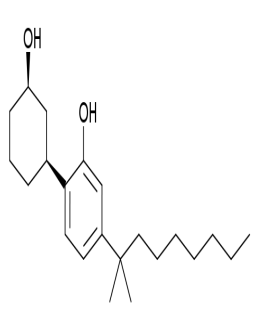
Designer drug- is an informal term for psychoactive drugs.
Drug Abuse, also known as substance abuse, is a patterned use of a substance (drug) in which the user consumes the substance in amounts or with methods which are harmful to themselves or others.
Herbal incense= Synthetic cannabis is a psychoactive designer drug created by spraying natural herbs with synthetic chemicals.
JWH-073 is an analgesic chemical from the naphthoylindole family that acts as a partial agonist at both the CB1 and CB2 cannabinoid receptors.
JWH-018 (1-pentyl-3-(1-naphthoyl)indole) or AM-678[1] is an analgesic chemical from the naphthoylindole family that acts as a full agonist at both the CB1 and CB2 cannabinoid receptors, with some selectivity for CB2.
JWH-200 (WIN 55,225)[1] is an analgesic chemical from the aminoalkylindole family that acts as a cannabinoid receptor agonist.
Zornia latifolia is a species of flowering plant in the legume family, Fabaceae. It is native to South America.
.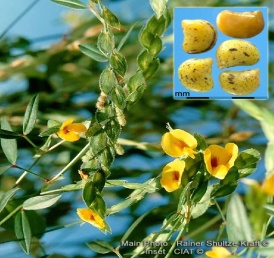
Leonotis leonurus, also known as lion's tail and wild dagga, is a plant species in the Lamiaceae (mint) family. The plant is a broadleaf evergreen large shrub native to South Africa and southern Africa, where it is very common.
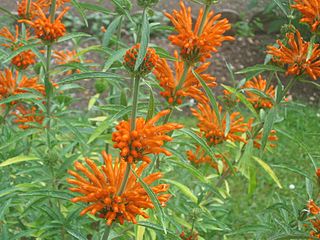
Leonurus sibiricus, commonly called honey weed or Siberian motherwort, is an herbaceous plant species native to central and Southwest Asia, including China, Mongolia, and Russia. It is naturalized in many other parts of the world, including South, Central and North Americas.
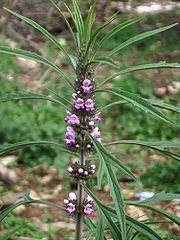
Nelumbo nucifera, known by numerous common names including Indian lotus, sacred lotus, bean of India, or simply lotus, is one of two species of aquatic plant in the family Nelumbonaceae.
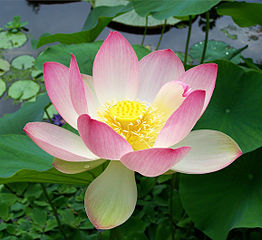
Nymphaea caerulea, also known as the Blue Egyptian water lily or sacred blue lily, is a water-lily in the genus Nymphaea.

Scutellaria nana is a species of flowering plant in the mint family known by the common name dwarf skullcap or dwarf skullcap.
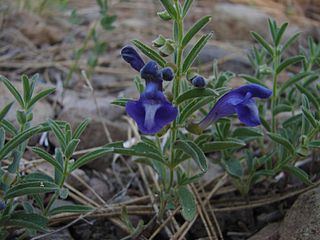
Pedicularis densiflora, known commonly as Indian warrior, is a plant of the lousewort genus in the broomrape family.

24


